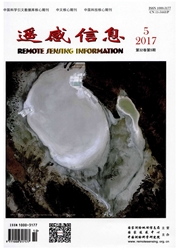

 中文摘要:
中文摘要:
针对在常规聚类应用中一般通过人工试凑调试输入特征分量表达式和权重所带来的参数选择困难的问题,该文以自适应计算替代人工调试为目的,给出了一个称为“输入特征向量自适应优化”(Self-adaptive Optimization of Input Feature Vector,SOIFV)的新方法。SOIFV分为两个部分:1)优化输入向量各分量的权重,它通过评估聚类结果的均质特性和紧密程度,确定权分量的改正方向和改正值,通过迭代逐步逼近最适宜的权向量;2)优化特征向量的描述符组合,这种优化通过使用描述符范例数据库自适应替换不适宜的特征分量实现,替换在当前最适宜权向量的指导下进行。以遥感图像K-均值聚类为例,以MATLAB为模拟平台,对SOIFV进行仿真测试;精度评估的测试样本以图像点采样获取,并与常规聚类方法作了精度比较。实验表明:SOIFV对聚类输入特征向量的自适应优化有效,以优化输入向量聚类的平均全局精度为85.27%,比使用常规方法聚类提高18.82%。
 英文摘要:
英文摘要:
Image clustering is the task of allocating pixels into groups or clusters according to the naturally grouping tendency of all the pixels in the feature space specified by an input feature vector. Some parameters for constructing the input feature vector, such as the expressions of features and the weight set for these features, have crucial influences on the quality of clustering. These parameters are usually decided by repeated tests and careful adiustment by hand because it is too difficult to make a proper decision for them. This paper aims to release the man-made adjustment by a newly explored algorithm named Self adaptive Optimization of Input Feature Vector (SOIFV). There are two sub operations in SOIFV: 1) Deciding the weight set of input feature vector by determining whether to increase or to decrease one of the weights and adjusting its value according to the evaluation of homogeneity and tightness of each cluster during one time iteration. 2) Determine if there is a descriptor needs to be replaced with a new one in the pre-built descriptor library by assessing the currently derived weight set. It is revealed that an optimal input feature vector, after iterative adjustment of weight set and sel~adaptive replacement of descriptor,can be constructed when taking K means clustering from remote sensing imagery as an example. The accuracy assessment indicates that by using SOIFV,the average overall accuracy assessed by the samples from image point sampling is 85.27% which is 18.82% higher than that by using conventional K-means clustering.
 同期刊论文项目
同期刊论文项目
 同项目期刊论文
同项目期刊论文
 期刊信息
期刊信息
